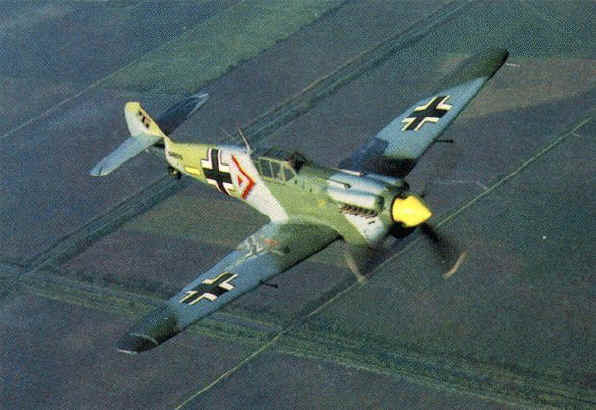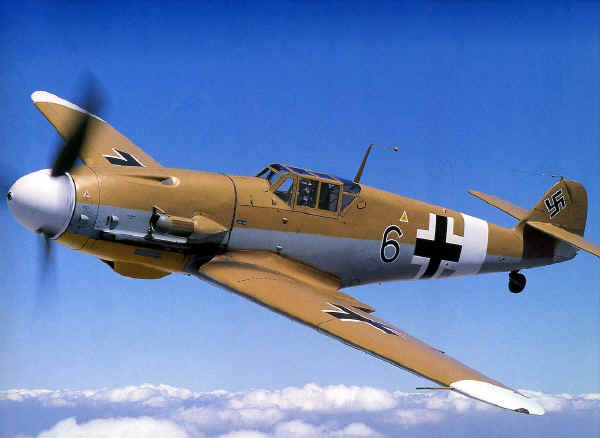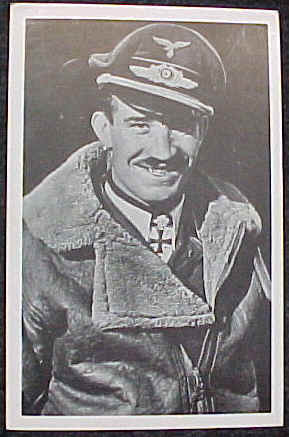 |
| Category: Air support/WW2/Enemy |

|
|
|
|

|
|
|
Messerschmitt ME 109 |
 |
| The
various strengths and shortcomings of the Messerschmitt, the Hurricane,
and the Spitfire largely cancelled out in combat. The Hurricane's
comparative weakness in acceleration was offset by its extreme strength
and ruggedness. There was little to choose between the Spitfire and the
Me109 between 12,000 and 17,000 feet, but above 20,000 feet the
Messerschmitt was undoubtedly the better machine. It dived faster than
its opponents, but required much more physical effort to fly. The weak,
narrow undercarriage caused many accidents, but despite this and the
cramped cockpit, the aircraft was popular with its pilots. |
 |
|
Click the photo above
to SUPER ENLARGE |
 |
Designed by Willy
Messerschmitt during 1934, and originally powered by a Rolls-Royce
Kestrel V engine, the Me109 won a fighter competition in October 1935.
During the process of progressive development in the pre-war years the
aircraft appeared in successively more powerful and heavier armed
versions; and the Me109B and C models achieved great success in Spain
with the Legion Condor's fighter unit.
Many of the Lufwaffe's
most successful wartime fighter pilots received their operational
blooding in Spain on the early 109 models. By August 1940 twenty-three Gruppen
were in action on the Channel front mainly equipped with the improved
Me109E-3 which mounted two machine guns in the nose, and two in the
wings.
Provision for a cannon firing through the spinner was also made
in the design, but due to heating and vibration problems, this was never
used in action. |
- One of the most successful of the
Luftwaffe pilots was Galland.
|
|
- Powerplant: One 1,150
hp Daimler Benz DB601 twelve-cylinder liquid-cooled engine
- Span: 32ft 4½in (9.87m)
- Length: 28ft 8in (8.74m)
- Max Speed: 357 mph (575km/h) at 12,300 ft
(3,749m)
- Armament: Two 7.9mm machine guns mounted on
the engine crankcase firing through upper nose decking and two 20mm
cannon in wings.
- Accommodation: Pilot only
- Recognition:
Sleek, shark-like fuselage with square, faired-in caopy and small
tail surfaces. 'Clipped' wing-tips and narrow-track main wheels.
|
|